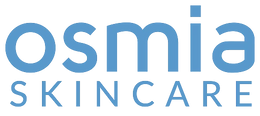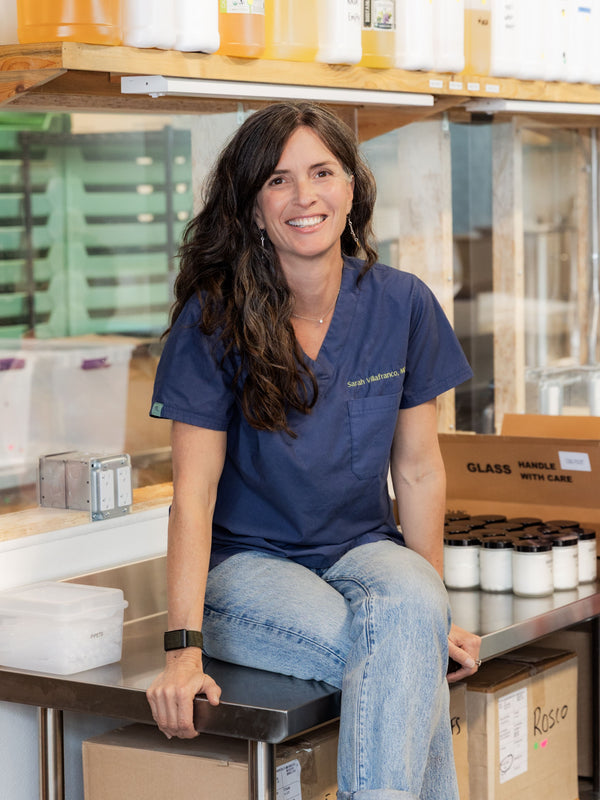What Are The Most Common Lip Problems?
When your lips are happy, you barely notice them—maybe you swipe on lip balm here and there, or add a little gloss when you’re feeling fancy. But when something’s off? It’s all you can think about. You use your lips to talk, eat, drink, smile, kiss, whistle, laugh—they’re essential to most of your life. So when they’re cracked, peeling, burning, or stinging, it’s hard to focus on anything else. Suddenly, your inner monologue is just one loud, panicked refrain: what is wrong with my lips??
The skin on your lips is thinner and more delicate than the skin on the rest of your face, which makes it extra vulnerable to irritation from foods, cosmetics, weather, and allergens. The most common lip problems? Contact dermatitis, exfoliative cheilitis, angular cheilitis, and plain old dryness—and yes, I’ve experienced all of them. Some people wonder if they might have lip eczema, but more often it’s one of these forms of cheilitis or dermatitis, which I’ll break down in this post. Please excuse the poor quality images below—they are all of my own lips in 2014, back when iPhones took much worse photos!
Can You Get Contact Dermatitis On Your Lips?
Years ago, I went to Jamaica with my family and visited friends who had a mango tree on their property. When they handed me a ripe, golden mango straight from the branch, I was overjoyed. I peeled it with my teeth and devoured every juicy, drippy bite—total bliss.
Three days later, mid-flight home, that bliss turned into a burning, blistering mystery. My lips started to itch and sting, and tiny blisters popped up along the borders, as you’ll see below. Turns out—fun fact I didn’t learn in med school—unwashed mango skin contains urushiol, the same chemical in poison oak and ivy that causes classic contact dermatitis, also known as a Type IV or Delayed Hypersensitivity Reaction.
Contact dermatitis can result from exposure to anything your immune system has “met” before—whether it’s poison ivy, nickel, or (as I now know) mango skin. Symptoms usually show up 2–3 days after exposure and include redness, pain, itching, and small blisters that can linger for days or even weeks. The fluid in the blisters isn’t contagious, but new blisters may appear in less-exposed areas or from secondary contact. Scratching or rubbing can also introduce infection and seriously prolong healing.
Treatment options range from the gentle (patience and barrier-repair products) to the more interventional—like antihistamines or topical steroids. If you’re using steroids, especially on your lips or face, always work with a physician to make sure you’re treating the issue safely.

Allergic Cheilitis vs. Irritant Cheilitis: What’s the Difference??
Closely related to contact dermatitis are irritant cheilitis and allergic cheilitis. (Cheilitis, by the way, is just the medical term for “inflamed lips”—and it covers a wide range of causes and symptoms.)
Irritant cheilitis often results from chronic lip licking, a subconscious habit that’s especially common in kids. Constant moisture, followed by evaporation, creates an ongoing cycle of irritation that breaks down the delicate lip barrier.
Allergic cheilitis, on the other hand, is usually caused by reactions to specific ingredients in lip products. And unfortunately, it’s not just the synthetic stuff; natural ingredients like beeswax, castor bean oil, peppermint, and balsam of Peru can be triggers, too. Other culprits include fragrance, preservatives, sunscreen agents (especially in lip balms), and even additives like Vitamin E. Colorants in lipstick and trace metals like nickel can also cause issues.
Identifying the source of the allergy can be maddening, because many lip products contain long lists of ingredients, making it hard to pinpoint what’s actually causing the problem.
Exfoliative Cheilitis: Causes and How to Treat It?
In cases of exfoliative cheilitis, the outermost layer of lip skin is stuck in a cycle of constant shedding. This makes it nearly impossible for the lips to retain moisture or repair themselves. The natural impulse is to scrub or peel the flakes away—but both actions only make things worse. What your lips need most in this state is to lock in every drop of hydration and be left alone to heal.
Pure, white petroleum jelly is one of the few "non-green" staples in my medicine cabinet—for good reason. Exfoliative cheilitis (and its equally stubborn cousin, eyelid dermatitis) often demand the simple, hypoallergenic barrier that petroleum jelly provides. When lips are this raw, even well-meaning natural ingredients like beeswax or essential oils can add fuel to the fire. That’s why petroleum jelly is the darling of most dermatologists—it blocks water loss and doesn’t irritate most people’s skin.
When I found myself in this exact state (see below), my go-to remedy was Avene thermal spring water, followed by a generous layer of white petroleum jelly. I avoided multipurpose products like Aquaphor, which can contain lanolin and other additives that might muddy the waters. After about a week of this minimalist routine, my lips slowly but surely began to recover.
As for what causes exfoliative cheilitis, it's a long list and you may never be able to narrow it down to one thing. But getting rid of sodium lauryl/laureth sulfate in your entire life, including shampoo, toothpaste, and laundry detergent, is a sure step toward reduced inflammation.

Angular Cheilitis Symptoms and Natural Treatment Options
Angular cheilitis is a common condition where the corners of the mouth—one or both—become cracked, sore, and inflamed. Talking, smiling, yawning, or eating acidic, salty, or spicy foods can make the irritation worse, and even cause bleeding. Most physicians suspect a fungal culprit and will often prescribe a topical antifungal or a short course of something like oral fluconazole.
When I experienced a mild case (pictured below), I opted for a natural approach: a drop of tea tree essential oil, known for its antifungal properties, paired with a layer of petroleum jelly to lock in moisture. It healed in just a few days. More stubborn or severe cases may need conventional treatment, so don’t hesitate to check in with your doctor if symptoms linger.

How to Heal Cheilitis and Other Lip Conditions Naturally
What do all of these lip issues have in common? Inflammation, water loss, and a compromised ability to heal. While each condition has its own root cause and may require specific treatment, there are a few universal truths when it comes to supporting your lips back to health.
Less is more. Reach for healing products with minimal ingredients. If your lips are in bad shape, plain white petroleum jelly might be your best friend—at least until things settle down.
Don’t lick, pick, or peel. It’s tempting, but it slows healing and opens the door to secondary infection. Always apply products with clean hands.
Watch what you eat. Acidic, salty, or very hot foods—think orange juice, salsa, red wine, or spicy chips—can irritate already-inflamed lips. Be gentle with your menu while your lips recover.
Consider an allergy. Patch testing with an allergist can be incredibly helpful, but you can also play detective yourself. Start reading labels and tracking your reactions—you could even be reacting to something completely natural, like peppermint or castor oil.
Choose lip-safe products. Your lips absorb what you put on them, and when you lick them, you’re essentially ingesting those ingredients. Stick to formulas without fragrance, parabens, synthetic dyes, or chemical sunscreens. And I recommend sticking to the cleaner ingredients even after your lips heal.
Use steroids cautiously. While they can provide fast relief, they’re not always the long-term answer. Overuse can cause other issues, including perioral dermatitis—a skin condition around the mouth that’s notoriously tricky to treat.
And remember: natural doesn’t always mean safe. I learned the hard way that I’d developed an allergy to ricinoleic acid—a compound in castor bean oil, found in most lip products. (It’s a leading cause of allergic cheilitis, even though it’s rarely discussed.) After months of trial and error, I created a lip balm without castor oil or essential oils—our Lip Doctor—and finally started to heal.
I’ve had nearly every lip affliction in the book, which might make me more of a lip expert than I ever was as an ER doctor. If you’ve lived through chronic lip issues, you know just how frustrating and consuming they can be. But with a little patience and some informed choices, you can get your lips back to soft, healthy, smiling condition.
Osmia Lip Products for Cheilitis and Sensitive Lips
Our Lip Doctor is an excellent lip balm for cheilitis. It's made with no essential oils, as even those can be irritating to sensitive lips. It has only six ingredients, including organic olive oil infused with organic lavender. Organic cocoa butter and beeswax give it staying power, while organic avocado and argan oils penetrate deeply to get your lips back in healthy, smiling condition.
With love and a MUCH happier smile,


















